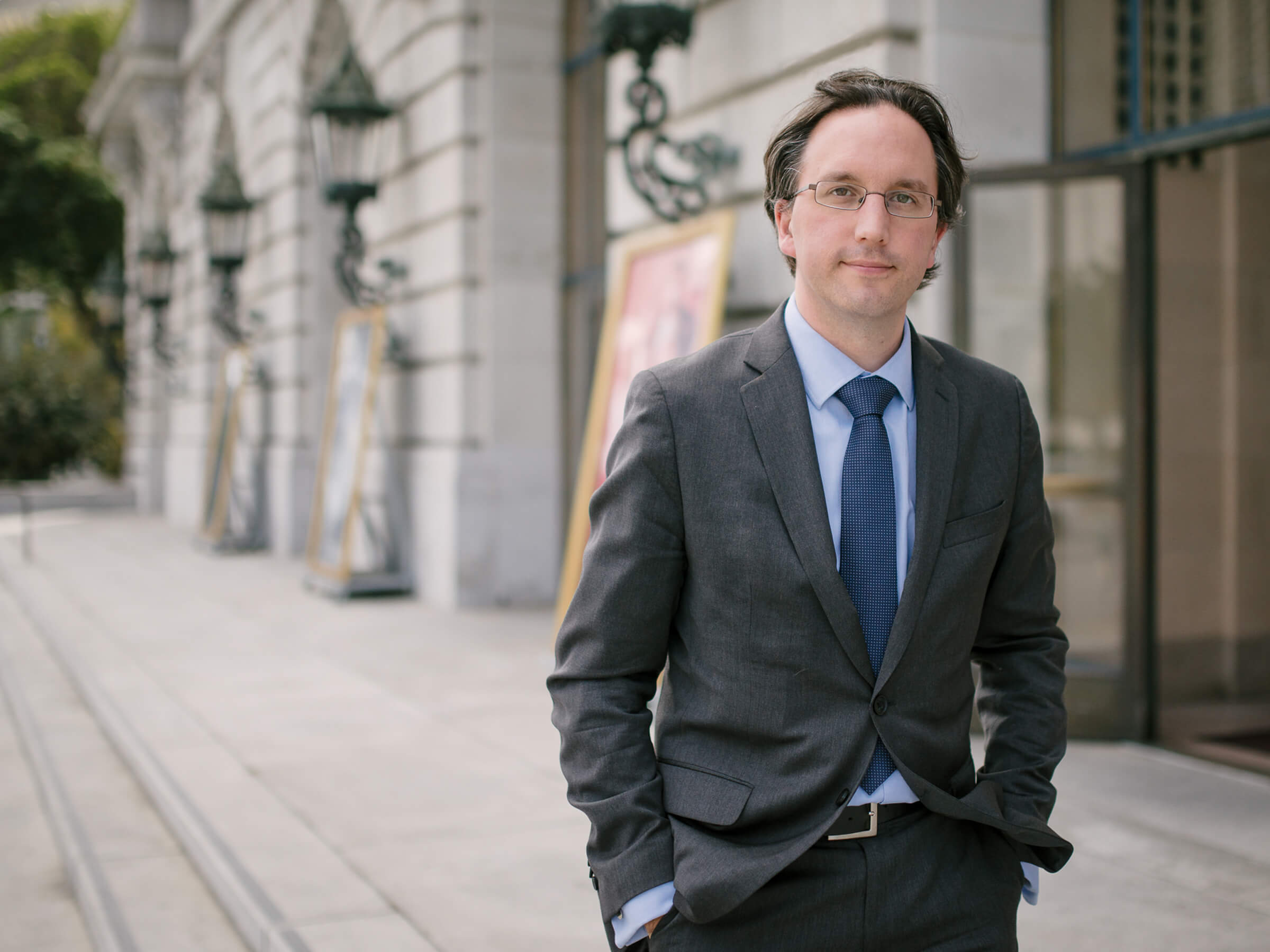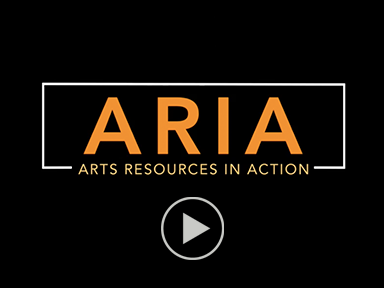Backstage with Matthew: Big Art in Miniature

This year marks the 10th anniversary here of Ruth Nott, the Opera’s Director of Education. Ruth joined us from the Metropolitan Opera Guild in 2008 and quickly established a vanguard approach to opera education. Her flagship school program is ARIA (Arts Resources in Action), a program developed in close collaboration with the San Francisco Unified School District, and through which we use every aspect of opera to teach the whole child, and connect teachers to opera in lasting ways.


One of the core values of ARIA is regular engagement: in our main program, participating classes can receive up to 35 visits a year as they explore the art-form and create their own opera. The classes I was visiting were being led by SFO teaching artist Katie Issel Pitre.
SFO has an incredible group of around 20 teaching artists, coming from a wide variety of backgrounds and specializing in many artistic disciplines. They form the core of the ARIA program, which is then expanded with other SFO members—scenic painters, choristers, Adlers, orchestra members, props artisans, etc.—and also with teachers themselves. Teachers who have been in the program for 4 years become LYOP teachers (“lead your own program”) and become mentors for newer ARIA teachers in their schools, ensuring a wonderful cycle of professional development. Thomas Edison Elementary has five classes involved in ARIA, connecting 150 students in grades 4–6 to opera. One of their teachers, Alex DeLanda, has been in ARIA for 6 years and is now a great guide to others.
Teaching artist Katie Issel Pitre’s background is broad and impressive, covering drama, poetry, theater, singing (classical and jazz), dance, playwrighting, and on and on. She has been a teaching artist for twelve years, the last three of which with us. She believes passionately in helping teachers gain confidence in being creative with their students, showing them how to be fully engaged in the arts, helping teachers validate students’ feelings through the arts, and letting students and teachers be comfortable making mistakes.
My first class was Brian Won’s 4th grade class, in which Katie was working on staging rehearsals for an opera the class had created entitled “Hurry Freedom.” The class picks their own topic, writes a libretto on that topic, composes the music, designs and builds sets and costumes, stages and performs the opera. It’s a total immersion into the ‘big art’ of opera.

It is deeply powerful to see how many classes gravitate towards hard social subjects that allow them to give voice and context to experiences in their own lives. “Hurry Freedom” came from a book the class was reading and is about an African immigrant, newly arrived in America, and the discrimination and exclusion they feel. At the end of the opera, the American owners of a mill are in desperate need of help and the immigrants come to the rescue, leading to a new sense of understanding and community. It’s a powerful story, told from the heart.


What struck me immediately was the feeling of trust in the room. Trust between Katie, Mr. Won and the students. This was their 21st visit together this academic year, and they had learned how to be vulnerable with each other, to respect each other, to be creative together in a safe space. This is what we aspire to in rehearsals in the opera house, and they had found it in a very pure sense in this 4th grade classroom. Katie worked with the students on how to show emotion on stage—hope, judgment, despair. And not only the emotion, but also the magnitude of the emotion and how to make it felt from the audience. How to enter the stage with that emotion. How to embody that emotion. The children were in rapt attention and focus, and, when they sang, the class naturally began on the same pitch without a prompt.

As the rehearsal went on, Katie helped refine their movements, teaching them how to stand up quickly from a kneeling position, working with them to stage the chorus so that the audience could see all the students. She worked thoughtfully and decisively but also inclusively, asking, engaging, bringing in the whole class. And she worked symbiotically with Mr. Won. This wasn’t a passive arts class for the teacher; this was no opportunity to go and grade math papers at the back of the classroom. Mr. Won was dynamically involved throughout, and he’s a teacher that had almost no arts background before the ARIA program. This is helping him take an ownership in his own artistic teaching, and he is using new creative tools to develop skills of collaboration and mutual support in other classes.

The relationship between teaching artist and teacher is a two-way one. Mr. Won uses his own form of non-verbal communication with his class: at the beginning of the class I attended, one of the students in his class quietly led the others (all silent) in a breathing exercise. Katie has now incorporated these techniques into her work with other classes.
Conversely, Mr. Won now includes singing on a daily basis in his classes. My second visit was with Rachel Carion and her 5th grade class in which Katie was working on choreography for them for their opera, "Big Al," a book about an ugly fish who struggles to find acceptance. It’s a tale of not judging a book by its cover, and when I spoke with the class, the children were completely engaged in the subject and aware of the depth behind the tale.

At this point in the ARIA process, Katie had selected three choreographers from the students, and she showed the choreographers how to take ideas from the dancing students, assess them, add in their own ideas, and come up with a direction for the choreography. This was so much deeper than just getting a show on for the parents. This was about introducing students to the creative process itself, teaching what it means to create in a collaborative environment, to take on the ideas of others but still provide clear direction, and then how to use gesture and movement to support ideas and concepts.


Ms. Carion is in her first year of ARIA. She also didn’t have a strong arts background, and wanted to broaden her skills in this area. She found a very supportive environment amongst the other four ARIA classes at the school, and she’s found valuable dynamics in the classroom as a result of this engagement. Students who tend to be quiet in other classes will take the lead in these creative sessions, becoming confident and realizing that they can shine. As Katie says, “you see faces become brighter.” The depth of the ARIA classes are such that children can begin to feel comfortable with their emotions, their experiences, and their ability to tell stories about their experiences in ways that move others.

By the end of the month, “Hurry Freedom” and “Big Al” will have been performed in the school canteen/theater/gym to parents, grandparents and other students. Profound messages will be shared from the stage. But the most profound experiences will have been in the classrooms as Katie, Mr. Won, Ms. Carion, and their students, have delved into difficult life issues together, in an environment of trust and creative possibility. And, whether or not they continue to sing, many of these students have realized now that they have a voice in the world, that they have something very powerful to say, and the tools with which to express themselves. It’s a powerful reminder of the essence of this art-form of opera: a way to share in life’s stories together and find meaning and catharsis in our own lives. Our incredible team of teaching artists and administrators help to unlock that essence at so many schools across the Bay Area.

To be in a classroom where “Opera” appears twice on the timetable for the day, is a very inspiring realization that, in some classrooms, the power of opera is having that kind of impact.


